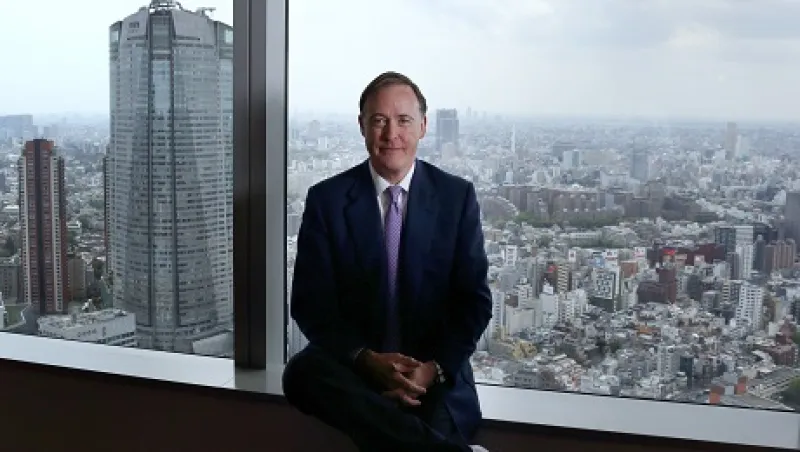It’s one of the biggest questions in global finance today: Will the aggressive reflation strategy of Prime Minister Shinzo Abe succeed in ending Japan’s nearly 20 years of deflation?
Global investors and analysts are divided on the issue, but Charles Beazley, the chairman and CEO of Nikko Asset Management, says Abenomics is already changing the behavior of Japanese investors.
Shortly after Prime Minister Shinzo Abe was elected in December and embarked on policies to inject massive liquidity into the economy to defeat deflation and kickstart growth, Nikko Asset Management launched a new fund designed to give investors exposure to economies in the Americas. The Nikko Gravity Americas Fund pulled in $3 billion from retail investors in just eight weeks, making it the largest U.S. equity-oriented fund launch ever in Japan, and more than 10 times larger than Nikko’s average new fund.
“This demonstrates rising interest in securities, and particularly rising interest in investing in the U.S.,” says Beazley, whose firm is the third-largest mutual fund company in Japan with $154 billion in assets under management. “Most of these investors had bought products predominantly for yield,” he adds, such as emerging-markets funds and real estate investment trusts.
“If Abe succeeds, and we are betting that he will, we will see confirmation things are on right track in a few months time,” Beazley says. “We are looking at signs of increasing retail sales, capital expenditure revival, labor and regulatory reform, progress on import reforms and progress on signing the Transpacific Partnership proposed by the U.S.”
The Abe government’s reflationary policies are succeeding in raising the risk profile of Japanese households, says Naka Matsuzawa, Nomura Securities’ chief Japan Rates Strategist in Tokyo. Retail investors are taking savings out of banks, where they earn nearly zero interest rates, to invest in equity markets. In February alone the mutual fund industry raised more than 1 trillion yen ($9.8 billion) in fresh assets, Matsuzawa notes. A year ago the industry was essentially flat or experienced modest net redemptions.
The Nikko Gravity Americas fund has a 67 percent weighting in U.S. shares, with the rest split among the Mexican, Latin American and Canadian markets. The fund allocates 18 percent to financial stocks, the highest sectoral weighting, followed by 15 percent each to information technology and energy.
Beazley says he sees more fund launches in the months ahead, and believes the mutual fund industry can boost its share of Japanese household assets — which stand at more than $15 trillion — to 4.8 percent in coming years from 3.8 percent currently.
Recently, J.P. Morgan Asset Management launched two new funds — the JPM North America High Dividend Equity Fund and JPM Nikko Asia Americas Discovery Fund — both of which sell to Japanese retail investors. It is not yet known how much either fund has raised.
Also Tsukasa Shimoda, the founder and president of Galleyla Investment, is in process of launching a long-short fund — the UMJ Galleyla Fund — which has the capacity to take in up to 20 billion yen ($213 million). This is a rare launch in Japan, given that early last year there was the $1.4 billion-loss cover-up scandal of Tokyo-based asset manager AIJ Investment that rocked the fund industry, forcing many domestic pension funds to review their portfolios in hedge funds.
In addition to household savings, Japanese corporates may soon raise their risk profiles. More than 100 companies listed in the First Section of the Tokyo Stock Exchange have more cash on their balance sheets than their market capitalization.
“Japanese companies have hidden strengths and are extremely resilient, and the amount of cash sitting around in Japan has built up to very, very large proportions,” Beazley says. “When deflation ends, this money will look for different homes. So Japan has to start expanding capital expenditures again. This liquidity will go into the domestic market as well as international markets.”






